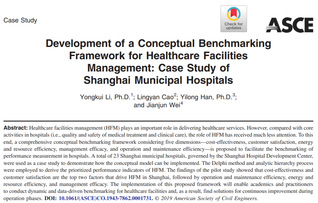摘要
Healthcare facilities management (HFM) plays an important role in delivering healthcare services. However, compared with core activities in hospitals (i.e., quality and safety of medical treatment and clinical care), the role of HFM has received much less attention. To this end, a comprehensive conceptual benchmarking framework considering five dimensions—cost-effectiveness, customer satisfaction, energy and resource efficiency, management efficacy, and operation and maintenance efficiency—is proposed to facilitate the benchmarking of performance measurement in hospitals. A total of 23 Shanghai municipal hospitals, governed by the Shanghai Hospital Development Center, were used as a case study to demonstrate how the conceptual model can be implemented. The Delphi method and analytic hierarchy process were employed to derive the prioritized performance indicators of HFM. The findings of the pilot study showed that cost-effectiveness and customer satisfaction are the top two factors that drive HFM in Shanghai, followed by operation and maintenance efficiency, energy and resource efficiency, and management efficacy. The implementation of this proposed framework will enable academics and practitioners to conduct dynamic and data-driven benchmarking for healthcare facilities and, as a result, find solutions for continuous improvement during operation phases.





